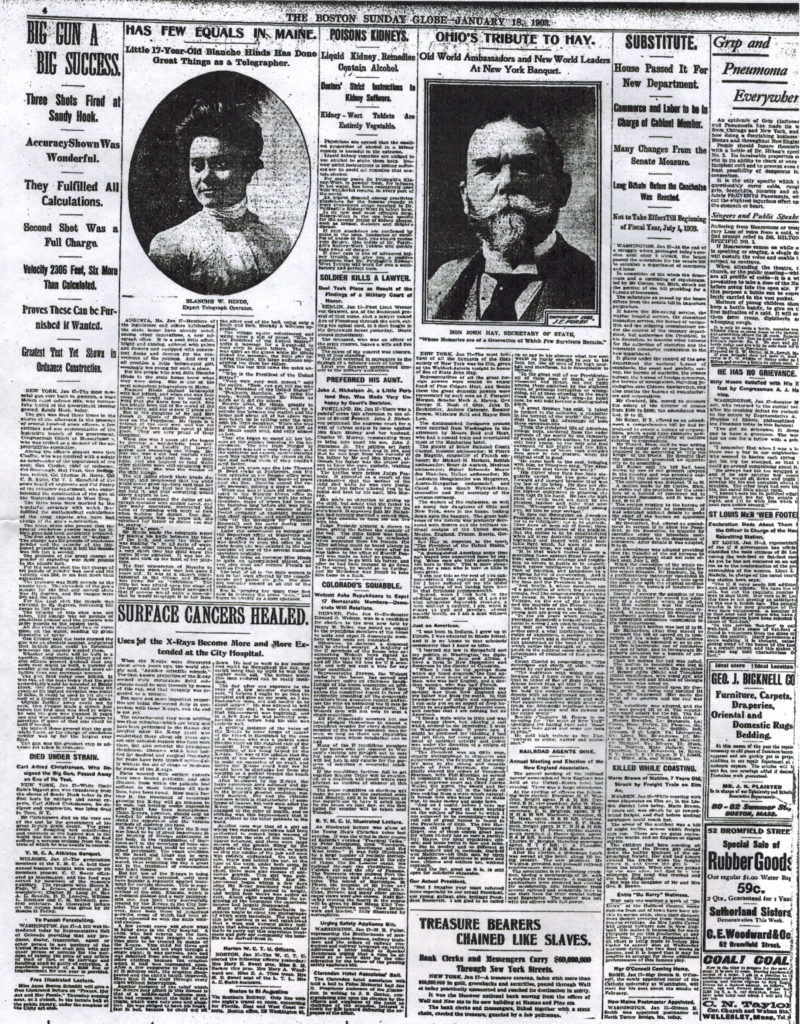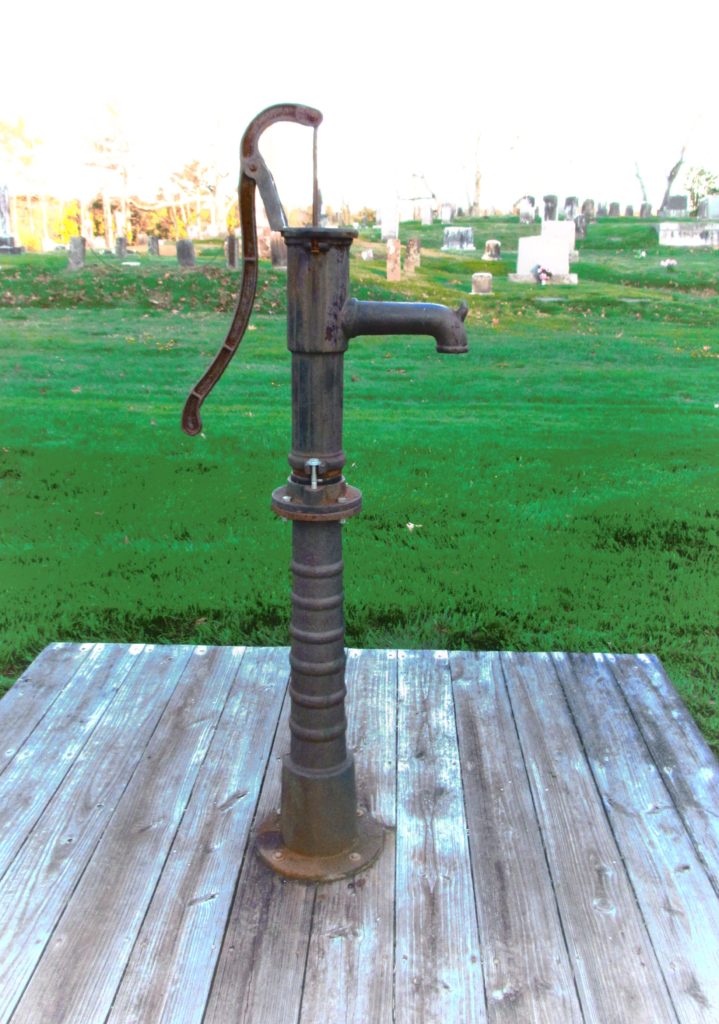Article from the Boston Sunday Globe
Dated Jan. 18, 1903
HAS FEW EQUALS IN MAINE
Little 17-Year-Old Blanche Hinds Has Done Great Things as a Telegrapher
Augusta, Me, Jan. 17
Members of the legislature and others habituating the state house have already noted, among other innovations, a new telegraph office. It is a neat little affair, bright and shining, adorned with palms and flowers and equipped with convenient desks and devices for the convenience of the patrons. And over it all presides a little brown-eyed girl, seemingly too young for such a place.
But the people who sent little Blanche Hinds to the state house knew what they were doing. She is one of the most competent telegraphers in Maine.
Blanche Hinds learned telegraphy with her letters, and when she was four years old could take by sound any word that she knew how to spell. She has hardly been out of the sound of the clicks since, and she is now 17 years old.
She is the daughter of Mr. and Mrs. Josiah D. Hinds of South Orrington over on the Penobscot. Mr. Hinds is a veteran of the Civil War, and has for many years been station agent at that place. They are very proud of their daughter.
When she was 3 years old she began to develop a wonderfully keen perception and a faculty for investigating and reasoning out things. Before she was four she had learned every letter of the alphabet from a little ?? and she learned to read while other children were still struggling with their letters. She was a wonder of the little village.
The old ladies shook their heads ?? and prophesied that the child would ever grow up – they said that her brain was so big that her head would not hold it, and that something would surely happen to her.
Mr. Hinds combined the duties of telegraph operator with station agent, and like many operators, contracted the habit of drumming with knife or fork when waiting for dinner. One day, when Blanche was 4 1/2 years old, she surprised her father one day saying:
“Make a ‘papa.'”
Mr. Hinds made the telegraph letter by placing his knife between the tines of the fork making “a” in all sorts of ways. Then the other letters followed, and in a very short time the child knew the entire Morse alphabet. It was her delight and took up most of her play time.
The first appearance of Blanche in public was when she was not quite 5 years old. It was at a church entertainment in the village and Blanche was down for an “exhibition.” The little tot was placed upon a stage of the large hall and her father announced that if everyone would write a message that he would telegraph it to her from the other end of the hall using only a knife and fork, literally a wireless operation.
The village squire volunteered and wrote upon a slip of paper, “Who is the President of the United States?” Quite a message for a 5 year old to read even in plain letters. The hall was quiet as the grave while Mr. Hinds tinked the message, the little girl listening intently, the large audience separating her from her father.
With the last tink came the quick answer: “Who is the President of the United States?”
“Very well, very well indeed,” said the squire. “Now, can you tell me who is the President of the United States?”
“Benjamin Harrison, sir,” came the reply which surprised Mr. Hinds as much as it did the others.
Shortly after, Mr. Hinds, greatly to the delight of his daughter, put up a private line between the station and the house and about all of his spare time was taken up in talking over the wire with his little daughter. When she was 6 years old she could read as fast as Mr. Hinds could send, and copy almost as fast.
Then she began to spend all her leisure at the station listening to the instrument. The line from Bangor to Bucksport was not a very busy one and the operator not expert, so that Blanche soon was talking with the others on the line and asking them if they couldn’t send faster.
About six years ago the late Thomas B. Reed spoke at Bucksport and the best operator in the Bangor office went down and sent about 6000 words of press over the line. Blanche copied the entire message, missing a single word.
When she was 14 years old, she substituted in the Western Union office in Bangor, taking her place with the other operators, many of whom had been in the business long before she was born. Later she entered the employ of the Postal company as assistant manager and chief operator and handled practically all the messages for President Roosevelt and his party during their stay in Bangor last summer.
Later she substituted as manager of the important office at Waterville and of the office at Augusta and when it was decided to open the office in the state house she was selected as the best operator of any of the several hundred operators available.
Besides being an operator Miss Hinds is an accomplished pianist and can also send and receive French as well as English.
The best of all is, the little woman is not in the least affected by the compliments and praise she gets. She does not consider herself at all out of the ordinary.
She is spending her spare time just now in learning the press “code” and hopes to qualify as a code operator.










